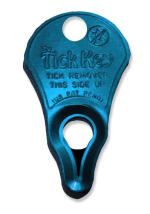thataway
Well-known member
- Joined
- Nov 2, 2003
- Messages
- 21,695
- Reaction score
- 69
- C Dory Year
- 2007
- C Dory Model
- 25 Cruiser
- Hull Identification Number
- DOR25652A707
- Vessel Name
- thataway
Today in Active Captain, there is advocation of removing a tick by twirling or spinning it with your finger. He notes that this may take as long as 3 to 5 minutes!
Video bad method here.
This is not the recommended method, and I have written a letter to Jeff and I hope that he will retract his recommendation.
The proper way is to use a tick removal tool or fine tweezers.
Video bad method here.
This is not the recommended method, and I have written a letter to Jeff and I hope that he will retract his recommendation.
The proper way is to use a tick removal tool or fine tweezers.
The proper way to remove a tick is to use either a “Tick removal tool” or fine tweezers, which allows grasping the tick at the area just behind the head and rapidly, but gently removing it. CDC states that the tick should be removed as quickly as possible by this method.
One of biggest worries with ticks, is Lyme disease. This is caused by a bacterium (spirochete), that will be in the saliva or stomach content of the tick. There are at least 16 diseases (both virus and bacterial) caused by ticks in the USA according to CDC. Secondary considerations are infections of the wound from other direct bacterial causes.
Although the twisting method will work, it has the same fault that many other methods have. That it is gives the tick time/opportunity to discharge both saliva and stomach content into the wound, thus increasing the risk of infection over the method of rapid tick removal with a tool or tweezers. This regurgitation is the ticks reaction to noxious stimulus including the twist method. The other traditional methods of tick removal share this danger.
After the tick is removed the wound should be carefully washed with soap and water. The tick should be disposed of in alcohol. flushing down a toilet, placing in a sealed container or wrapping in tape. Do not crush the tick between your fingers.
Bob Austin MD

